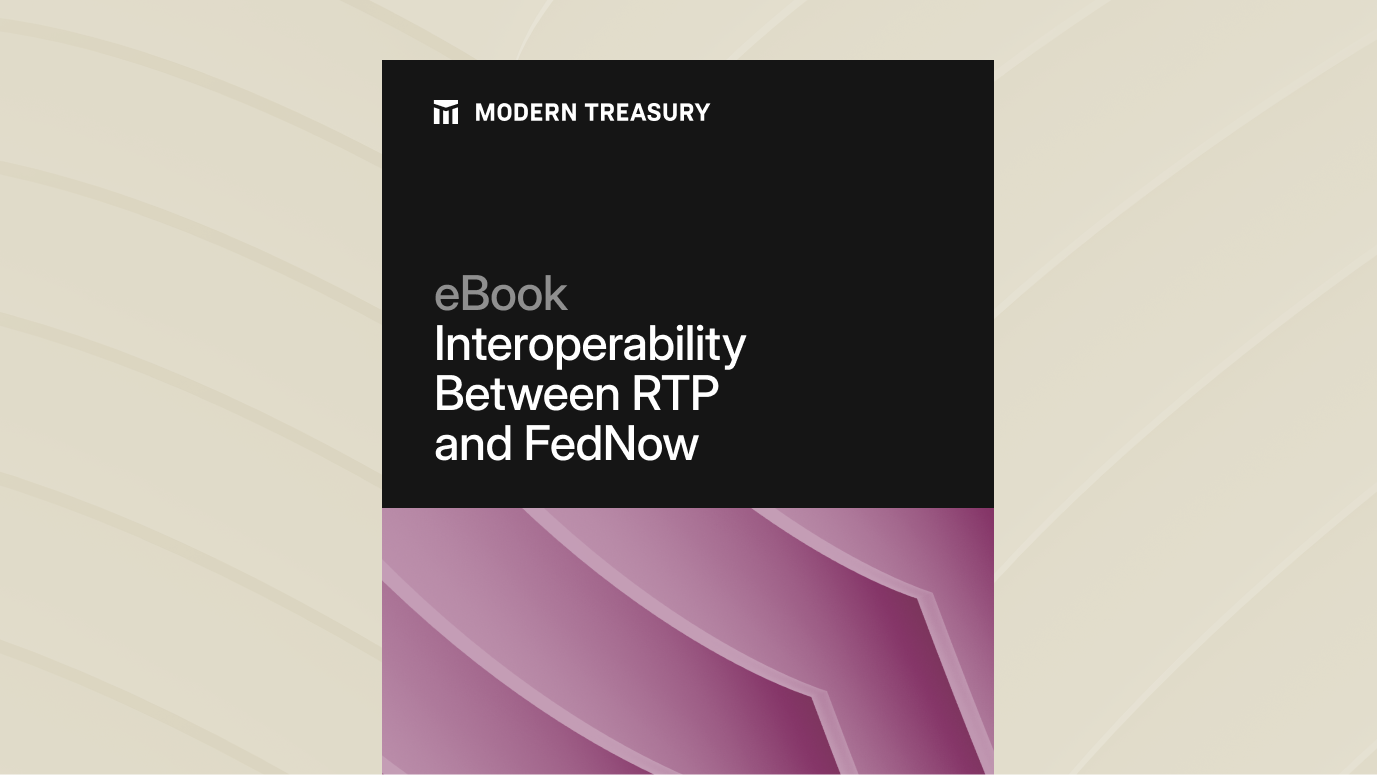Join us at Transfer 2025 to hear how industry leaders are building payments infrastructure for a real-time world.Register Today →
FedNow is Our Chance at Real-Time Payments: A Conversation with Sam Aarons
Our Co-founder and CTO, Sam Aarons, was on a FedNow steering committee. In our conversation, he shares why its launch next year is so significant and why he’s excited about it.

Introduction
Three weeks ago, the Federal Reserve issued a press release updating the timing for their new real-time payment rail, FedNow. FedNow will be the first new payment rail in the United States since the introduction of the Automated Clearing House (ACH) in the early 1970s. This new payment service, designed by the Federal Reserve, will enable real-time payments for financial institutions of any size, in any community 24/7/365.
Our co-founder and CTO, Sam Aarons, sat on one of the Fed’s steering committees in preparation for FedNow. I sat down with him last week to dig into what the significance of this new rail is, what it means for banks and companies, and what opportunities and challenges it presents. This is what he had to say.
A Q&A with Sam Aarons
Q: Can you tell us a little bit about the FedNow steering committee and your role on it?
A: I was subscribed to the Federal Reserve’s mailing list, and had gotten an email invitation to this community of banks and service providers. There were four or five different areas they were looking into–one was on ISO-20022 standards; I was on the Reconciliation working group. We build software and already work with RTP—we were one of the few JP Morgan customers to fully go live with RTP—so we know how this works.
They empaneled us for a couple months, during which we had a few meetings on Zoom around: “Here’s what we know on reconciliation; what do we need to know to make this seamless?” And a lot of banks had questions around timings and when transactions clear and when they would receive certain files.
And this is when I started connecting the dots that this was actually going to launch soon. They were figuring out ways to get community input because this was going to be a big, new payment rail—basically a better version of Fedwire.
Q: So you talked about banks and service providers on the steering committee, but what about companies?
A: In the Reconciliation group, I actually said, “Yes, we are a service provider, but we mostly work with corporates,” of which there weren’t that many in these steering committees. And I think that’s because there are very few corporates even thinking about this today. But they should be. This is going to be big, and more banks are interested in using FedNow because the Fed is backing it.
In any case, both banks and corporates can come to us if they’re interested in implementing FedNow. We can work with them and help them, and we know a lot about it, because I was consulted when they were building it.
Q: What are the benefits of FedNow for companies interested in it?
A: They’ll get the same benefits as you would with RTP or any faster payment. You can pay anyone at any time—it’s 24/7/365. When money leaves or arrives in your account, it’s final and done—very similar to wires that way. A lot more people and banks have access to it. And there’s data attached to the payment; information moves with the payment so we know more about it.
Q: If banks and companies aren’t already using and reaping the benefits of RTP, why would they care about using FedNow?
A: I’ve been asking myself the same question, and I think it’s a coverage thing. The coverage for FedNow will be higher because it’s cheaper—the Fed could basically provide services at close to zero, so more banks can use it, especially community banks.
It’s going to be $0.045 per transfer—no matter how big the transfer—and $0.01 for RFP (“Request for Payment”). That’s an order of magnitude less expensive. And it’s just $25 a month to enroll. This makes it possible for smaller banks not to have to invest in private solutions like Zelle. Obviously there will be service and tech costs that will be more expensive, but it’s still significantly cheaper than any other rail.
The low cost opens the doors to more banks than RTP. RTP itself is only available in select banks, but it’s 60% of checking accounts, because they’re pretty large banks. But not all of them have RFP functionality, or it’s still being tested. FedNow will launch with RFP support available right away, which is huge for a lot of different use cases. Think about a bill: with RFP, a business like PG&E can send a payment request for a bill due, and you can see it on your phone, click a button, and money leaves your account automatically and settles instantly.
Banks benefit from RTP and RFP right now, but they also don’t want to cannibalize the other parts of their business, so they charge a good amount for it. So if you’re a company and you need to make a payment and you look at ACH that takes 1 business day and can get there for $0.20 versus an RTP payment that will cost $0.50, there are only so many use cases that make up that difference.
So even though there are benefits, it’s expensive. Because it’s expensive, less people use it. And because less people use it, less banks invest in it. It’s a bit of a chicken and egg situation. But if the cost comes down, and the benefits stay the same, coverage increases—and I think the calculus starts to shift more and more.
Q: So if RTP and FedNow are the same, why are they still different rails? During the panel we hosted with Protocol last week, Jim Colassano of The Clearing House said that though they worked to help the Fed design FedNow so there weren’t two different ways of doing payments, there are still enough differences that would require building a second integration for FedNow.
A: Yes, and it isn’t great that they are two different rails, because obviously it would have been easier if they came up with a standard. I still think the differences are very minute: the two rails have message routing interoperability, which means they are using generally the same messaging formats and architectural flows. The differences are such that you have to be cognizant of very small field changes for the different systems, and there will be maybe a few hundred rules that are different.
But with Modern Treasury, if you are an active user of both rails, you can use our simple API to access both RTP and FedNow, and leave it to us to figure out how communication works between these two systems.
Q: What is the big opportunity with FedNow?
A: It’s the closest thing we’ve seen so far to have ubiquitous real-time payments in the United States. A lot of other countries have faster payments already, and a lot of this has to do with the fact that other rails like card and ACH weren’t as prevalent in these places.
Faster payments solve some major pain points—today, the fastest way I could send money to myself, and pay myself from one bank account to another, is by writing a paper check, putting it on the table, and taking a picture of it. FedNow, because of its coverage, means we’ll be able to do this account-to-account payment quickly from bank to bank. And that’s just at a personal level.
When you think about this at a macro level: faster, easier money movement means better economic connections. If we can make ubiquitous, fast payments work in the US, we open ourselves to other possibilities: fast payments across borders, the opportunity to really redefine how the world moves money.
Something you’ll hear us say a lot at Modern Treasury is that we believe that eventually all payments will begin and end in software. This means payments embedded into more products and services, with opportunities for new revenue streams, entrants, moments to delight. And I think with FedNow, we’re moving closer to that reality. We’re moving from manual to automated, from batch processing to streaming, from opaque to transparent.
What’s Next?
In the coming months, we’ll be posting more information on how companies and banks can better prepare for FedNow. If you want to learn more, or talk through a use case, reach out to us.
Try Modern Treasury
See how smooth payment operations can be.







